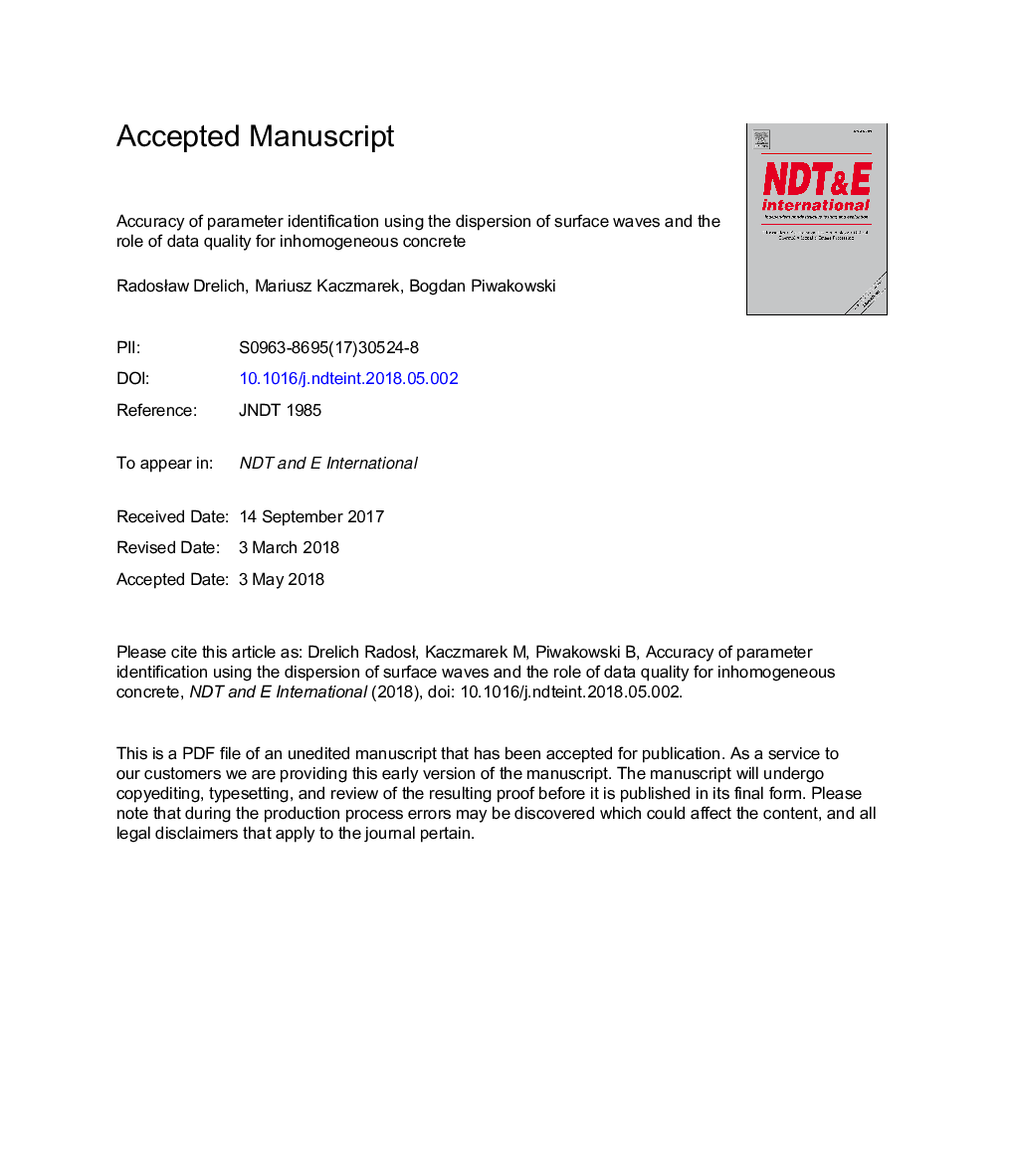| Article ID | Journal | Published Year | Pages | File Type |
|---|---|---|---|---|
| 6758239 | NDT & E International | 2018 | 36 Pages |
Abstract
To perform these studies, cuboidal models of inhomogeneous concrete composed of two layers of different classes of concrete are prepared. During experiments, surface wave signals are acquired within a frequency range of 35â¯kHz-160â¯kHz using a non-contact ultrasonic automated scanner, which enables quick and precise signal recording, avoiding concrete surface modification through the use of the coupling agent. Experimental dispersion curves are obtained using the Slant-Stack transformation. The synthetic data are obtained from the solution of the Thomson-Haskell model. The inversions are performed using the in-house software CLOUD and tested and validated on the multilayer model samples. The criteria for the optimum wavelength intervals of the dispersion curves are proposed: the lower wavelength limit λLâ¯â¤â¯d, and the upper wavelength limit λUâ¯â¥â¯3.5d, where d is the thickness of the top layer. The consequences of narrowing the intervals are thoroughly studied, and upper and lower limits are determined both for experimental and synthetic data. It is shown that the efficiency of inversion depends on both wavelength limits and accuracy of the data.
Keywords
Related Topics
Physical Sciences and Engineering
Engineering
Civil and Structural Engineering
Authors
RadosÅaw Drelich, Mariusz Kaczmarek, Bogdan Piwakowski,
